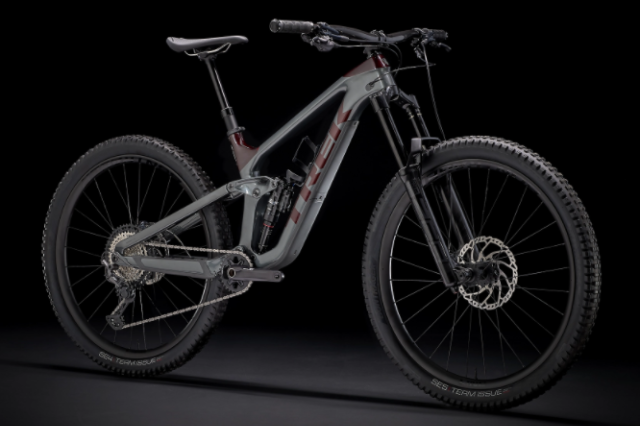Lightweight Bikes: Your Ultimate Guide to Unmatched Speed and Efficiency
Your riding experience can be much improved by a lightweight bike. Lighter bikes improve speed, efficiency, and handling regardless of your type of riding—road, mountain, or commuter. From their advantages to selecting the correct one for your needs, this book will cover all about lightweight bikes.
Why Choose a Lightweight Bike?
For a number of reasons, riders want light bikes. Some main benefits are as follows:
- Less weight equates to less effort, which smooths cycling and facilitates climbs.
- Lighter bikes fast and sustain speed with less effort.
- Improved control results from easy bike maneuvering made possible by a lightweight frame.
- Less Fatigue: A smaller bike less strains your body if you ride great distances.
- Carrying, storing, or lifting your bike is far easier when it’s light.
READ MORE: Electric Mountain Bikes
Types of Lightweight Bikes
Not every lightweight bike is exactly like another. Your riding style will affect the several kinds you should take into account:
1. Road Bikes
On paved terrain, road bikes are meant for efficiency and speed. Usually they include:
- Low rolling friction thin, high-pressure tires.
- Carbon fiber or aluminum lightweight frames.
- Drop handles for an aerodynamic posture.
2. Mountain Bikes (MTB)
Although mountain bikes’ weight increases with their suspension and tough components, lightweight bikes designed for off-road use, such as certain MTB models, do exist with:
- Frames made of carbon fiber cut weight without sacrificing strength.
- For maximum efficiency, minimal suspension or hardtail designs.
- Tubeless tires will help to save pointless weight.
3. Hybrid Bikes
Combining road and mountain bikes, hybrid bikes provide comfort and adaptability using:
- Either lightweight carbon fiber or aluminum frames.
- Wider than road bikes for stability, thinner tires than MTBs.
- Flat handlebars enable a good upright posture.
4. Folding Bikes
For commuters and visitors looking for something portable, folding bikes are fantastic. Important characteristics consist in:
- Lightweight, compact aluminium or carbon frames.
- Simple transportation is made possible by quick-folding mechanisms.
- Minuscule but robust wheels for mobility.
5. Electric Bikes (E-Bikes)
Efficiency with power is combined in lightweight electric motorcycles. technological developments have produced:
- Designs for slimmer batteries aimed at low weight.
- Lightweight motors free of sacrifice in speed.
- Aluminum or carbon frames to counter weight and strength.
Materials Used in Lightweight Bikes
The weight and performance of your bike frame are largely influenced by its materials. The most often used lightweight materials are here:
1. Carbon Fiber
- quite weak and light.
- Absorbs vibrations for a flawless ride.
- More costly but with the finest weight-to—-strength ratio.
2. Aluminum
- Reasonably priced and lightweight.
- Though somewhat heavier than carbon fiber, durable.
- Perfect choice for cyclists on a tight budget.
3. Titanium
- Though lighter than steel, it is equally strong.
- extremely strong and rust resistant.
- costly but provides a pleasant travel.
4. High-Quality Steel
- Though still utilized in some light-weight designs, heavier than aluminum or carbon.
- guarantees great longevity and a flawless ride.
Choosing the Right Lightweight Bike
Consider these main criteria while choosing a lightweight bike:
1. Purpose of the Bike
- For racing, commuting, mountain trails, or casual rides, do you need it?
- While hybrids and MTBs provide adaptability, road bikes are fastest.
2. Frame Material
- At a higher cost but for the lightest choice is carbon fiber.
- Aluminum for a reasonably priced and light substitute.
3. Wheelset and Tires
- Reduced total bike weight comes from lighter wheels and tubeless tires.
- On road bikes, deep-section carbon rims boost aerodynamics.
4. Gearing System
- Select a drivetrain fit for your riding environment.
- Though less weight may follow from fewer gears, think about hill efficiency.
5. Brakes
- While adding weight, disc brakes increase stopping power.
- Although they are smaller, rim brakes can not work effectively in damp situations.
Tips for Maintaining a Lightweight Bike
Maintaining the best shape of your lightweight bike guarantees improved performance and lifespan:
- Regular cleaning helps to avoid needless weight and influences efficiency by dirt.
- Good lubrication helps a chain and drivetrain to be smooth.
- Under-inflated tires slow down you and increase cycling difficulty.
- Tighten screws and bolts; loose components can compromise handling and stability.
- Make sure gears and brakes run without friction.
Conclusion
Lightweight bikes enhance your riding experience, making cycling a more enjoyable and efficient activity. Choosing the right lightweight bike depends on your riding style, budget, and needs, regardless of your experience level. Selecting the correct frame material, components, and maintaining your bike properly will help you enjoy a faster, more pleasant ride. Therefore, lightweight bikes are most definitely worth considering if you want speed, agility, and easy handling!




